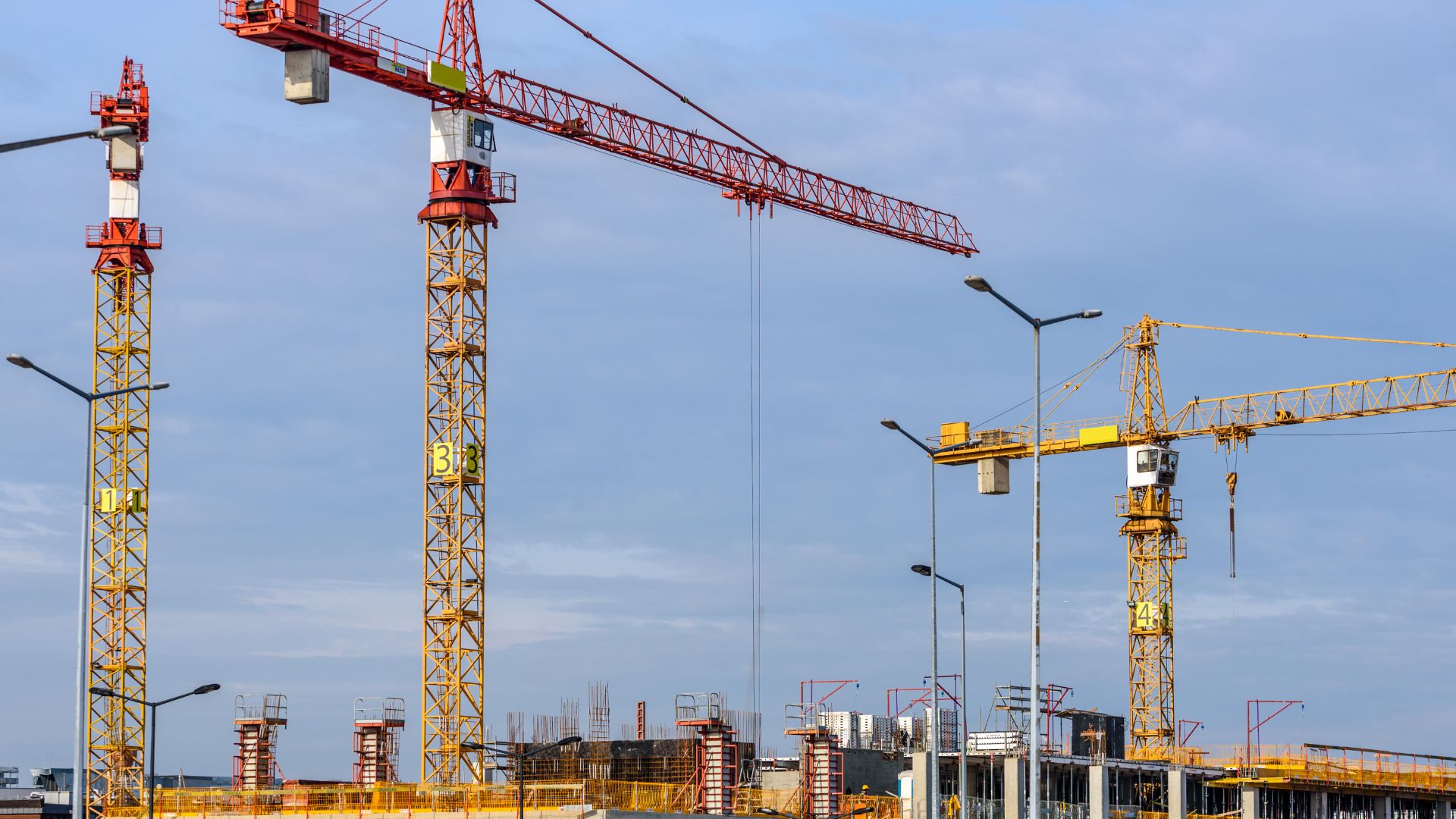Business
Mega Construction Projects That Relied on Advanced Crane Technology

When it comes to large-scale construction projects, the right equipment can make all the difference. From towering skyscrapers to massive bridges and complex infrastructure developments, cranes play a crucial role in lifting, transporting, and positioning heavy materials with precision and efficiency. As technology has advanced, so too has crane engineering, allowing for safer and more ambitious builds. In the points below, we take a closer look at some of the world’s most impressive mega construction projects that relied on cutting-edge crane technology to bring them to life.
Burj Khalifa – Dubai, UAE
Standing at a staggering 828 metres, the Burj Khalifa remains the tallest building in the world. Constructing such a colossal structure required cranes that could operate at extreme heights. Specialised luffing-jib tower cranes were employed to lift materials hundreds of metres into the air, battling high winds and desert heat. These cranes were anchored to the structure itself as it rose, ensuring stability and precision throughout the build.
Sydney Metro – Australia
As Australia’s largest public transport infrastructure project, the Sydney Metro has transformed the way people move around the city. The project required massive tunnel boring machines (TBMs) to carve underground routes, but just as critical were the cranes used to transport and position enormous precast concrete segments. Mobile and crawler cranes with advanced hydraulic systems played a key role in assembling stations and track infrastructure with minimal disruption to existing road networks.
Hong Kong-Zhuhai-Macau Bridge – China
This engineering marvel, stretching 55 kilometres across the Pearl River Delta, is one of the longest sea crossings ever built. Given its scale, floating cranes with immense lifting capacity were used to position pre-fabricated bridge sections. Some of these cranes had lifting capabilities exceeding 3000 tonnes, demonstrating the sheer power and precision required for such a complex marine project.
The Panama Canal Expansion – Panama
The expansion of the Panama Canal was one of the most ambitious infrastructure projects in recent history, involving the construction of massive new lock chambers. Gigantic gantry cranes were used to install the enormous steel lock gates, some weighing over 3000 tonnes. These cranes had to operate with pinpoint accuracy to ensure the seamless functioning of the canal’s new locks, allowing for the passage of larger vessels.
Hinkley Point C Nuclear Power Station – UK
The construction of this next-generation nuclear power plant has required some of the world’s most advanced heavy-lift cranes. The site features one of the largest land-based cranes in the world, capable of lifting reactor components that weigh hundreds of tonnes. These high-tech cranes have been crucial in ensuring the safe and efficient assembly of the plant’s intricate infrastructure.
The Role of Advanced Crane Technology in Modern Construction
Each of these projects would have been impossible without the evolution of crane technology. Innovations such as digital load monitoring, autonomous operation, and enhanced safety systems have allowed cranes to handle heavier loads with greater precision than ever before. For companies tackling complex construction projects, working with an experienced crane hire provider is essential. Businesses like Sventek Cranes offer cutting-edge crane solutions, ensuring that even the most ambitious projects can be completed safely and efficiently.
Mega construction projects continue to push the limits of engineering and design, and advanced crane technology remains at the heart of these achievements
Whether it’s lifting components for a record-breaking skyscraper or positioning bridge segments over open water, cranes will always be an integral part of building the world’s most remarkable structures. By leveraging state-of-the-art crane systems, today’s construction industry is making the impossible possible – one lift at a time.
Business
High Volume, High Value: The Business Logic Behind Black Banx’s Growth

In fintech, success no longer hinges on legacy prestige or brick-and-mortar branches—it’s about speed, scale, and precision. Black Banx, under the leadership of founder and CEO Michael Gastauer, has exemplified this model, turning its high-volume approach into high-value results.
The company’s Q1 2025 performance tells the story: $1.6 billion in pre-tax profit, $4.3 billion in revenue, and 9 million new customers added, bringing its total customer base to 78 million across 180+ countries.
But behind the numbers lies a carefully calibrated business model built for exponential growth. Here’s how Black Banx’s strategy of scale is redefining what profitable banking looks like in the digital age.
Scaling at Speed: Why Volume Matters
Unlike traditional banks, which often focus on deepening relationships with a limited set of customers, Black Banx thrives on breadth and transactional frequency. Its digital infrastructure supports onboarding millions of users instantly, with zero physical presence required. Customers can open accounts within minutes and transact across 28 fiat currencies and 2 cryptocurrencies (Bitcoin and Ethereum) from anywhere in the world.
Each customer interaction—whether it’s a cross-border transfer, crypto exchange, or FX transaction—feeds directly into Black Banx’s revenue engine. At scale, these micro-interactions yield macro results.
Real-Time, Global Payments at the Core
One of Black Banx’s most powerful value propositions is real-time cross-border payments. By enabling instant fund transfers across currencies and countries, the platform removes the frictions associated with SWIFT-based systems and legacy banking networks.
This service, used by individuals and businesses alike, generates:
- Volume-based revenue from transaction fees
- Exchange spreads on currency conversion
- Premium service income from business clients managing international payroll or vendor payments
With operations in underserved regions like Africa, South Asia, and Latin America, Black Banx is not only increasing volume—it’s tapping into fast-growing financial ecosystems overlooked by legacy banks.
The Flywheel Effect of Crypto Integration
Crypto capabilities have added another dimension to the company’s high-volume model. As of Q1 2025, 20% of all Black Banx transactions involved cryptocurrency, including:
- Crypto-to-fiat and fiat-to-crypto exchanges
- Crypto deposits and withdrawals
- Payments using Bitcoin or Ethereum
The crypto integration attracts both retail users and blockchain-native businesses, enabling them to:
- Access traditional banking rails
- Convert assets seamlessly
- Operate with lower transaction fees than those found in standard financial systems
By being one of the few regulated platforms offering full banking and crypto support, Black Banx is monetizing the convergence of two financial worlds.
Optimized for Operational Efficiency
High volume is only profitable when costs are contained—and Black Banx has engineered its operations to be lean from day one. With a cost-to-income ratio of just 63% in Q1 2025, it operates significantly more efficiently than most global banks.
Key enablers of this cost efficiency include:
- AI-driven compliance and customer support
- Cloud-native architecture
- Automated onboarding and KYC processes
- Digital-only servicing without expensive physical infrastructure
The outcome is a platform that not only scales, but does so without sacrificing margin—each new customer contributes to profit rather than diluting it.
Business Clients: The Value Multiplier
While Black Banx’s massive customer base is largely consumer-driven, its business clients are high-value accelerators. From SMEs and startups to crypto firms and global freelancers, businesses use Black Banx for:
- International transactions
- Multi-currency payroll
- Crypto-fiat settlements
- Supplier payments and invoicing
These clients tend to:
- Transact more frequently
- Use a broader range of services
- Generate significantly higher revenue per user
Moreover, Black Banx’s API integrations and tailored enterprise solutions lock in these clients for the long term, reinforcing predictable and scalable growth.
Monetizing the Ecosystem, Not Just the Account
The genius of Black Banx’s model is that it monetizes not just accounts, but entire customer journeys. A user might:
- Onboard in minutes
- Deposit funds from a crypto wallet
- Exchange currencies
- Pay an overseas vendor
- Withdraw to a local bank account
Each of these actions touches a different monetization lever—FX spread, transaction fee, crypto conversion, or premium service charge. With 78 million customers doing variations of this at global scale, the cumulative financial impact becomes immense.
Strategic Expansion, Not Blind Growth
Unlike many fintechs that chase customer acquisition without a clear monetization path, Black Banx aligns its growth with strategic market opportunities. Its expansion into underbanked and high-demand markets ensures that:
- Customer acquisition costs stay low
- Services meet genuine needs (e.g., cross-border income, crypto access)
- Revenue per user grows over time
It’s not just about acquiring more customers—it’s about acquiring the right customers, in the right markets, with the right needs.
The Future Belongs to Scalable Banking
Black Banx’s ability to transform high-volume engagement into high-value profitability is more than just a fintech success—it’s a signal of what the future of banking looks like. In a world where agility, efficiency, and inclusion define competitive advantage, Black Banx has created a blueprint for digital banking dominance.
With $1.6 billion in quarterly profit, nearly 80 million users, and services that span the globe and the blockchain, the company is no longer just scaling—it’s compounding. Each new user, each transaction, and each feature builds upon the last.
This is not the story of a bank growing.
This is the story of a bank accelerating.
-

 Tech4 years ago
Tech4 years agoEffuel Reviews (2021) – Effuel ECO OBD2 Saves Fuel, and Reduce Gas Cost? Effuel Customer Reviews
-

 Tech6 years ago
Tech6 years agoBosch Power Tools India Launches ‘Cordless Matlab Bosch’ Campaign to Demonstrate the Power of Cordless
-

 Lifestyle6 years ago
Lifestyle6 years agoCatholic Cases App brings Church’s Moral Teachings to Androids and iPhones
-

 Lifestyle4 years ago
Lifestyle4 years agoEast Side Hype x Billionaire Boys Club. Hottest New Streetwear Releases in Utah.
-

 Tech7 years ago
Tech7 years agoCloud Buyers & Investors to Profit in the Future
-

 Lifestyle5 years ago
Lifestyle5 years agoThe Midas of Cosmetic Dermatology: Dr. Simon Ourian
-

 Health6 years ago
Health6 years agoCBDistillery Review: Is it a scam?
-

 Entertainment6 years ago
Entertainment6 years agoAvengers Endgame now Available on 123Movies for Download & Streaming for Free
